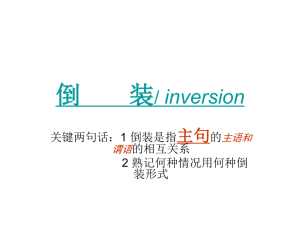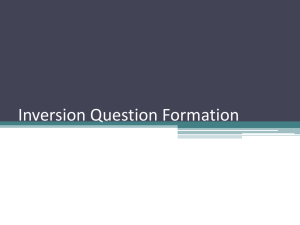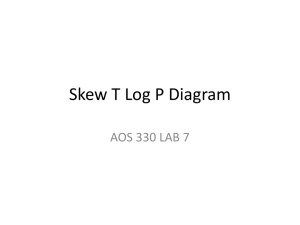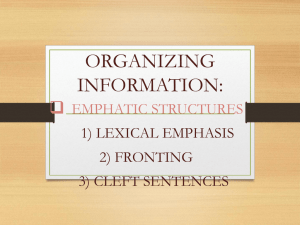- White Rose Research Online
advertisement
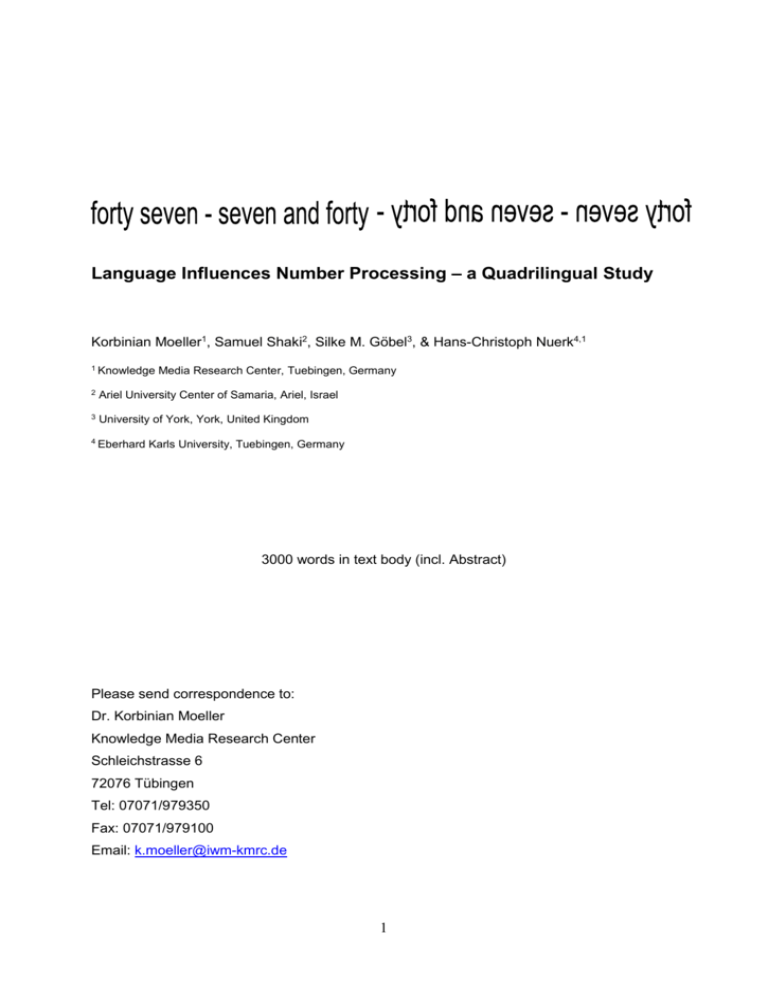
Language Influences Number Processing – a Quadrilingual Study Korbinian Moeller1, Samuel Shaki2, Silke M. Göbel3, & Hans-Christoph Nuerk4,1 1 Knowledge Media Research Center, Tuebingen, Germany 2 Ariel University Center of Samaria, Ariel, Israel 3 University of York, York, United Kingdom 4 Eberhard Karls University, Tuebingen, Germany 3000 words in text body (incl. Abstract) Please send correspondence to: Dr. Korbinian Moeller Knowledge Media Research Center Schleichstrasse 6 72076 Tübingen Tel: 07071/979350 Fax: 07071/979100 Email: k.moeller@iwm-kmrc.de 1 ABSTRACT Reading/writing direction or number word formation influence performance even in basic numerical tasks such as magnitude comparison. However, so far the interaction of these language properties has not been evaluated systematically. In this study we tested English, German, Hebrew, and Arab participants realizing a natural 2 x 2 design of (i) reading/writing direction (left-to-right vs. right-to-left) and (ii) number word formation (noninverted vs. inverted, i.e., forty seven vs. seven-and-forty). Symbolic number magnitude comparison was specifically influenced by the interaction of reading/writing direction and number word formation: participants from cultures where reading direction and the order of tens and units in number words are incongruent (i.e., German and Hebrew participants) exhibited more pronounced unit interference in place-value integration. A within-group comparison indicated that this effect was not due to differences in education. Thus, basic cultural differences in numerical cognition were driven by natural language variables and their specific combination. 148 words 2 INTRODUCTION In this quadrilingual cross-cultural study, we examined the impact of reading/writing direction and the formation of number words on performance in a number comparison task. We used a 2 x 2 design involving Arabic-, English-, German-, and Hebrew-speaking participants realizing an orthogonal quasi-experimental manipulation of the two factors. These factors were chosen, because both have been observed to influence number processing when investigated in isolation. First, it is assumed that numbers are represented in ascending order along a so-called mental number line (e.g., Restle, 1970; Dehaene, Bossini, & Gireaux, 1993; but see Santens & Gevers, 2008 for a differing view). Interestingly, the orientation of the mental number line seems to depend on the dominant reading/writing direction. In cultures reading/writing from left-to-right numbers increase in size along the mental number line accordingly (e.g., Dehaene et al., 1993). In contrast, in cultures with right-to-left reading/writing a less clear or even reversed right-to-left orientation has been observed (e.g., Shaki, Fischer, & Petrusic, 2009; Shaki, Fischer, & Göbel, 2012). Importantly, however, influences of reading/writing direction on number processing have so far been investigated primarily for effects with single-digit numbers (e.g., spatial-numerical associations such as the SNARC effect, Dehaene et al., 1993, indicating faster responses to small numbers by the left hand and to larger numbers by the right hand in left-to-right reading cultures). Yet, it has not been examined whether reading/writing direction also influences place-value integration of tens and units in two-digit number processing. Second, number word formation influences place-value integration in two-digit number processing in tasks as basic as number magnitude comparison. Generally, two methods of number word formation can be distinguished. In most Western languages, the order of tens and units in number words follows the sequence of their corresponding digits in digital notation (e.g., English: 47 “forty seven”). However, there are also languages in which this order is inverted (e.g., German, 47 “siebenundvierzig”, i.e., seven-and-forty). This inversion property influences basic numerical tasks such as magnitude comparison. When 3 separate comparisons of tens and units yield incompatible (e.g., 47_62, 4>6 but 7<2) rather than compatible decision biases (e.g., 52_67, 5>6 and 2>7) reaction times are prolonged because the units interfere with the processing of the decision-relevant tens (e.g., Nuerk, Weger, & Willmes, 2001). Interestingly, such unit interference was more pronounced in languages with inversion in which the order of tens and units is incongruent between verbal and digital notation (e.g., Nuerk, Weger, & Willmes, 2005; Pixner, Kaufmann, Moeller, Hermanova, & Nuerk, 2011a). Additionally, inversion influences are not limited to magnitude comparison but were also reported for a variety of both verbal and non-verbal numerical tasks such as transcoding (Pixner et al., 2011b; Zuber, Pixner, Moeller, & Nuerk, 2009), number line estimation (Helmreich, Zuber, Pixner, Kaufmann, Nuerk, & Moeller, 2011), and even addition (Brysbaert, Fias, & Noël, 1998; Göbel et al., 2014; see Nuerk, Moeller, Klein, Willmes, & Fischer, 2011, for an overview). However, so far, influences of number word inversion were only investigated in left-to-right reading/writing languages. Thus, to date (main) effects of reading/writing direction and inversion on number processing have only been investigated in isolation. Yet, performance may depend on an interaction of these two cultural factors. This idea has so far never been pursued by comparing appropriate languages. One might hypothesize that the increased unit-decade compatibility effect in a language with inversion is driven by the fact of opposing directions of overall reading habits (from left-to-right) and the sequence of tens and unit in number words (from right-to-left). If this assumption is correct a reversed pattern of results should be found for the participants reading from right-to-left. In the current study we realized an orthogonal variation of reading direction (left-to-right vs. right-to-left) and inversion (with inversion vs. without inversion, Figure 1) by testing four language groups: (i) English participants reading/writing from left-to-right with no inversion for number words, (ii) German participants also reading/writing from left-to-right but tens and units are inverted in number words, (iii) Hebrew participants reading/writing from right-to-left with no inversion in number words and (iv) Arab participants reading/writing from right-to-left but with an inversion of tens and units in number words. Increased unit interference is expected for language groups with spatially 4 opposing directionality of reading/writing and inversion (i.e., German and Hebrew participants, see Figure 1). The main effects of inversion (e.g., Nuerk et al., 2005) and reading direction (Shaki et al., 2009) reported so far may thus only reflect specific sections of the postulated interaction. Note that neither reading direction nor inversion was task-relevant in our study as we studied symbolic number comparison using the same stimulus set of Arabic digits throughout. Interestingly, while text is generally read from right-to-left in Arabic and Hebrew, multi-digit Arabic numbers are nevertheless read from left-to-right because the place-value system is not reversed (i.e., "47" is written as 47, not ). Thus, we only presented Arabic two-digit numbers to participants that are processed following the same place-value coding in all four language groups. Expected differences should be driven by differing reading/writing direction and inversion properties of number words. It is important to note that our hypothesis specifically addresses unit interference as indicated by the unitdecade compatibility effect and not overall differences between the languages per se. No Number Name Inversion English Left-toright reading Number Name Inversion German 47 47 siebenundvierzig forty seven (seven-and-forty) Hebrew Right-toleft reading Arabic 47 47 Figure 1: Overview of the study design. We used four groups of participants creating a 2 x 2 matrix of the factors reading direction and number word inversion. These factors are congruent for English and Arabic, but incongruent for German and Hebrew. 5 MATERIALS AND METHODS Participants and Design: 24 English-speaking (7 males, mean age 23.1 years), 18 Arabic-speaking (13 males, mean age 24.4 years), 24 German-speaking (8 males, mean age 23.6 years), and 30 Hebrew-speaking participants (5 males, mean age 22.7 years) were tested in the UK, Palestine, Germany, and Israel, respectively. All participants were native speakers of the respective language, had received the majority of their mathematics education in their native language and were assessed in their native language. Task and Stimuli: All participants completed the same two-digit number magnitude comparison task consisting of 360 two-digit number pairs of which the larger number had to be chosen. The stimulus set consisted of 240 between-decade pairs (e.g., 47_62) and 120 within-decade filler pairs (e.g., 46_49) presented above and below a fixation point until response. The Arrow-down key of a standard keyboard had to be pressed by the left index finger when the lower number was the larger one and the Arrow-up key with the right index finger when the upper number was the larger one. Between-decade pairs were taken from Nuerk et al. (2001) and comprised 120 unit-decade compatible and 120 incompatible number pairs. Stimuli order was randomized for each participant individually. Analyses: Error rates were low and did not differ significantly between language groups (English: M=4.4%, SD=3.2%; Arabic: M=3.2%, SD=2.8%; German: M=3.6%, SD=2.2%; Hebrew: M=2.5%, SD=2.3%). Analyses focused on RT (reaction time from display onset to response) of correct responses. RTs deviating from an individual’s mean by more than ±3SD were discarded from further analyses (MEnglish=1.1%, MGerman=1.0%, MHebrew=1.2% and MArabic=0.8% of trials). Importantly, there were no reliable differences between the groups in the percentage of trials excluded by the trimming procedure [F(3, 92)=1.36, p=.26, all pairwise comparisons p>.31]. To control for significant language group differences in overall RT [F(3, 92)=32.68, p<.001] and its standard deviation [F(3, 92)=15.42, p<.001, see Figure 2A; MEnglish=675ms, SDEnglish=135ms; MArabic=949ms, SDArabic=192ms; 6 MGerman=702ms, SDGerman=132ms; MHebrew=860ms, SDHebrew=183ms.] individual RTs were z-transformed prior to the analyses (cf. Nuerk, Kaufmann, Zoppoth, & Willmes, 2004, Zorzi et al., 2012; Klein et al., 2013). Individual unit-decade compatibility effects were computed as mean z-RT for incompatible minus mean z-RT for compatible number pairs. Compatibility effect scores were submitted to a 2x2 ANOVA evaluating the between-subjects factors reading direction (left-to-right vs. right-to-left) and inversion (with vs. without inversion). For reasons of clarity compatibility effects are also reported in ms. 7 RESULTS Compatibility effects in the four language groups In each group the majority of participants showed the expected compatibility effect with faster responses to compatible than incompatible number pairs (English: 23 out of 24 participants, Arab: 16/18, German: 24/24, Hebrew: 28/30). Additionally, the t-tests indicated that the compatibility effect was significant for each language group [all: ts > 7.43, all ps<.001; MEnglish=39ms; MArabic=39ms; MGerman=46ms; MHebrew=49ms, see Figure 2]. The ANOVA revealed a reliable main effect of reading direction, indicating stronger unit interference for left-to-right readers [F(1, 92)=7.87, p<.01, see Figure 2B]1. In line with our expectations, this main effect was further qualified by the hypothesized disordinal interaction [F(1, 92)=5.54, p<.05, see Figure 2B and 2C]. When the order of tens and units was incongruent between number words and symbolic numbers (in the case of German and Hebrew) unit interference was more pronounced (z-RT: .31; raw RT: 48ms) than when the order of tens and units was congruent (z-RT: .24, raw RT: 39ms, in the case of Arabic and English, see Figure 2). Importantly, unit interference in raw RT was also reliably more pronounced in German and Hebrew, i.e. for languages with an incongruent mapping between number words and symbolic numbers [t(94 =1.90, p<.05, tested one-sided]. 8 A Overall RT Performance RT in ms 1000 Compatible Pairs Incompatible Pairs 800 600 400 Arabic English German Hebrew Language group B Unit Interference z-RT RT in ms C Unit Interference German 50 Hebrew 0.3 German Hebrew English 40 0.2 English Arabic Arabic No Inversion Inversion No Inversion 0.1 Inversion 30 Right-to-Left Left-to-Right Right-to-Left Left-to-Right Reading direction Reading direction Figure 2: Panel A gives mean raw RT (with error bars indication SD) separated for unitdecade compatible and incompatible number pairs and the four language groups. Panel B and C depicts the disordinal interaction of reading/writing direction and inversion observed for unit interference (computed as zRT incompatible - zRT compatible, Panel B, Panel C for raw RT): unit interference is most pronounced when reading/writing direction and number word inversion are incongruent (i.e., for Hebrew and German). Error bars indicate 1 standard error of the mean. 9 DISCUSSION The current study investigated influences of reading/writing direction and the formation of number words on basic numerical cognition employing a quadrilingual (i.e., Arabic, English, German, and Hebrew) 2x2 design realizing an orthogonal variation of these two factors. Unit decade integration was differentially affected in the four language groups depending on the combinations of reading/writing direction and inversion: The unit-decade compatibility effect was significantly larger when the directionality of reading/writing and inversion interfered in German (reading from left-to-right but naming the units before the tens in number words) and Hebrew (reading from right-to-left but naming the tens before the units in number words). In sum, these data clearly indicate that differences in numerical cognition between cultures are attributable to the specific interaction of reading direction and the inversion property of number words. These mentally represented cultural habits influence basic numerical performance in symbolic number magnitude comparison even though they are not directly task-relevant (all participants only ever saw two-digit Arabic numbers). Thereby, this study provides clear evidence that basic numerical cognition is indeed shaped by cultural factors (e.g., Ansari, 2009). In line with Macizo and Herrera (2010) we suggest that participants have acquired a language-specific scheme for processing multi-digit numbers which is influenced reliably by the number word structure of the respective language (as reflected by the inversion property in the current study). Yet, the novel theoretical idea our results suggest is that besides the representation conveyed by Arabic number symbols a representation of the corresponding number word is also activated concomitantly inducing a spatial bias complying with the order tens and unit are considered in the respective language's number words. Importantly, this suggestion is not only in line with the propositions of the Triple Code Model of numerical cognition assuming a direct and bidirectional connection between an analogue and a verbal code of number representation (e.g., Dehane & Cohen, 1997),but also allows for a specification of the underlying mechanisms by considering Roelofs’ (1997) model of word-form encoding. The latter model assumes interactive and bidirectional associations between the level of semantics (i.e., number magnitude information in the present case) and 10 the so-called lemma level representing syntactic properties of words (i.e., number words). Transferred to the present case this means that the syntactic structure of number words (i.e., whether tens or units are named first) should be able to influence the processing of number magnitude on the semantic level. Synced with the influence of differing reading directions and its consequences for the congruency of the order of tens in Arabic notation and the respective number words (see Figure 1) this provides an account for the observed interaction of reading/writing direction and number word inversion. One might speculate that it is orthography which links phonology and reading/writing direction (cf. van Orden, 1987; Ferrand & Grainger, 1992), however, future research is needed to evaluate the exact level of the observed interaction. Nevertheless, the combination of the factors phonology and reading/writing direction is important as the mere activation of number word phonology can only account for inversion effects observed for left-to-right reading/writing languages (e.g., Helmreich et al., 2011; Pixner et al., 2011). But only the respective reading/writing direction defines the spatial bias (left-to-right vs. right-to-left) of the verbal representation (cf. Nazir, Ben-Boutayab, Decoppet, Deutsch, & Frost, 2004 for comparable evidence from reading research) and provides a theoretical framework accounting for our results of the current study: Influences of this spatial bias in co-activated number words and its congruency with the symbolic digital-Arabic representation (i.e., inversion) in the assessed languages (as modulated by reading/writing direction) were critical for decreasing or increasing unit interference. The unit-decade compatibility effect was significantly larger in those cases where the directionality of reading/writing direction and inversion (i.e., the congruency between verbal number words and Arabic digital notation) interfered: in German (reading from left-to-right but naming the units before the tens in number words) and Hebrew (reading from right-to-left but naming the tens before the units in number words). By evaluating the interaction of reading direction and number word inversion we captured cultural specifics of a range of Indo-European and Semitic languages. However, future studies are needed to investigate, for instance, in how far these results can be generalized to cultures where reading progresses from top to bottom and number words are 11 perfectly transparent as in most East-Asian languages (see Ito & Hatta, 2004; for first indications on influences of top-to-bottom reading on number processing). For instance, "47" is spoken as yon juu siti (literally: four ten seven) in Japanese. The place-value at the tens' position is thus directly and transparently coded in the Japanese number word system comparable to the place-value at the hundreds position in English (e.g., four hundred). The present results strongly suggest that languages with more transparent number words and yet another dominant reading direction should not only be studied with regard to one particular factor in isolation. The compatibility effect was also reliably smaller for right-to-left reading participants. This finding may be associated with opposing reading directions for words and multi-digit numbers - a specificity of right-to-left reading cultures. While text is generally read from rightto-left in these cultures multi-digit Arabic numbers need to be read from left-to-right because the place-value coding system is not reversed (i.e., "47" is written as 47 and not ). Therefore, through the necessary switch from right-to-left to left-to-right reading for multi-digit numbers in text passages the tens digit may be considered more prominently by participants from right-to-left reading cultures because it reflects the point from which processing of the respective two-digit Arabic number has to start. As a consequence unit interference may then be reduced. In addition, one might speculate that the current results may be caused by group differences in background variables such as general cognitive abilities, socio-economic status, or the extent of exposure to languages other than their first language. However, general cognitive abilities have never been found to be associated systematically with the compatibility effect (e.g., Moeller, Pixner, Zuber, Kaufmann, & Nuerk, 2011; Pixner et al., 2011). Furthermore, compatibility effects in educated and semi-illiterate adults (Wood et al., 2006) were observed to be of comparable size indicating that education does not seem to be a critical factor. Importantly, results of our own study further support this point: 10 out of the 18 Arab participants were construction workers without higher education whereas the remaining 8 were university students. Closer inspection of these data revealed that the 12 compatibility effect did not differ between these two groups [t(16) = 0.84, p = .42]. Finally, recent studies indicate that the compatibility effect for two-digit Arabic numbers is not modulated by whether participants speak a second language (Macizo, Herrera, Román, & Martín, 2011a) nor by their second language proficiency (Macizo, Herrera, Román, & Martín, 2011b). In sum this clearly argues against the argument that eventual background variables influenced our results. Nevertheless, it has to be acknowledged that the evidence so far comes from studies on participants reading/writing from left-to-right. Thus, further studies involving right-to-left reading/writing participants would be desirable to substantiate our findings and evaluate possible interactions of multi-digit number processing and general cognitive and also perceptual (e.g., Kazandijan & Chokron, 2009) variables in cultures reading/writing from right-to-left. Taken together, our results provide further evidence that culture shapes basic processes of human cognition: even seemingly abstract cognition such as number magnitude representation is modulated by the interaction of cultural experiences such as directional reading/writing habits (e.g., Fischer & Brugger, 2011; Fischer, 2012) and number word formation (Nuerk et al., 2005; Pixner et al., 2011a). Although no number words (and thus no direct reading direction manipulation) were present in our stimuli, the experience with a particular reading/writing direction and a respective number word system nevertheless influenced two-digit number magnitude comparison differentially in an interactive manner (i.e., more pronounced unit interference when the directionality of reading/writing and inversion interfered: in German and Hebrew). 13 Footnotes 1 Please note that this main effect is observed for z-transformed RT only. This indicates that although compatibility effects are comparable for right-to-left and left-to-right readers for raw RT, the compatibility effects for left-to-right readers are more pronounced when standardized on their overall shorter RT. The reason for this divergence is simple. Rightto-left readers exhibited a higher SD in RT. Consequently, the same compatibility effect for raw RT corresponds to a smaller effect for z-transformed RT in right-to-left readers because the z-transformation penalizes the higher SD. 14 REFERENCES Ansari, D. (2008) Effects of development and enculturation on number representation in the brain. Nature Reviews Neuroscience, 9, 278-91. Brysbaert, M., Fias, W. & Noël, M.P. (1998). The Whorfian hypothesis and numerical cognition: Is “twenty-four” processed in the same way as “four-and-twenty”? Cognition, 66, 51-77. Dehaene, S., & Cohen, L., 1997. Cerebral pathways for calculation: double dissociation between rote verbal and quantitative knowledge of arithmetic. Cortex 33, 219-250. Dehaene, S., Dupoux, E., & Mehler, J. (1990). Is numerical comparison digital? Analogical and symbolic effects in two-digit number comparison. Journal of Experimental Psychology: Human Perception and Performance, 16, 626-641. Dehaene S., Bossini S., & Giraux P. (1993). The mental representation of parity and numerical magnitude. Journal of Experimental Psychology: General, 122, 371-396. Ferrand, L., & Grainger, J. (1992). Phonology and orthography in visual word recognition: evidence from masked non-word priming. Quarterly Journal of Experimental Psychology A, 45, 353-372. Fischer, M. H. (2012). A hierarchical view of grounded, embodied and situated numerical cognition. Cognitive Processing, 13, 161-164. Fischer, M. H., & Brugger, P. (2011). When digits help digits: Spatial-numerical associations point to finger counting as prime example of embodied cognition. Frontiers in Psychology, 2: 260. Göbel, S., Moeller, K., Pixner, S., Kaufmann, L., & Nuerk, H.-C. (2014). Language affects symbolic arithmetic in children: the case of number word inversion. Journal of Experimental Child Psychology 119, 17-25. Helmreich, I., Zuber, J., Pixner, S., Kaufmann, L., Nuerk, H.-C., & Moeller, K. (2011). Language effects on children’s non-verbal number line estimations. Journal of CrossCultural Psychology, 42, 598-613. 15 Ito, Y., & Hatta, T. (2004). Spatial structure of quantitative representation of numbers: Evidence from the SNARC effect. Memory & Cognition, 32, 662–673. Kazandijan, S., & Chokron, S. (2009). Paying attention to reading direction. Nature Reviews Neuroscience, 9, 965. Klein, E., Moeller, K., Kettl, D., Zauner, H., Wood, G., Willmes, K., Haider, C., Gassner, A., & Nuerk, H.-C. (2013). Object-based neglect in number processing. Behavioral and Brain Functions. Macizo, P., & Herrera, A. (2010). Two-digit number comparison: Decade-unit and unitdecade produce the same compatibility effect with number words. Canadian Journal of Experimental Psychology, 64, 17-24. Macizo, P., Herrera, A., Román, P. E., & Martín, M. C. (2011a). The processing of two-digit numbers in bilinguals. British Journal of Psychology, 102, 464-477. Macizo, P., Herrera, A., Román, P., & Martín, M. C. (2011b) Proficiency in a second language influences the processing of number words. Journal of Cognitive Psychology, 23, 915-921. Moeller, K., Pixner, S., Zuber, J., Kaufmann, L., & Nuerk, H.-C. (2011). Early place-value understanding as a precursor for later arithmetic performance – a longitudinal study on numerical development. Research in Developmental Disabilities, 32, 1837-1851. Nazir, T. A., Ben-Boutayab, N., Decoppet, N., Deutsch, A., & Frost, R. (2004). Reading habits, perceptual learning, and recognition of printed words. Brain and Language, 88, 294-311. Nuerk, H.-C., Weger, U., & Willmes, K. (2001). Decade breaks in the mental number line? Putting tens and units back into different bins. Cognition, 82, B25-B33. Nuerk, H.-C., Weger, U., & Willmes, K. (2005). Language effects in magnitude comparison: Small, but not irrelevant. Brain and Language, 92, 262-277. Nuerk, H.-C., Kaufmann, L., Zoppoth, S. & Willmes, K. (2004). On the development of the mental number line. More, less or never holistic with increasing age. Developmental Psychology, 40, 1199-1211. 16 Nuerk, H.-C., Moeller, K., Klein, E., Willmes, K., & Fischer, M. H. (2011). Extending the mental number line - A review of multi-digit number processing. Zeitschrift für Psychologie / Journal of Psychology, 219, 3-22. OECD (2010). PISA 2009 Results. What Students Know and Can Do. Student Performance in Reading, Mathematics and Science. Volume I. Paris: OECD. Pixner, S., Kaufmann, L., Moeller, K., Hermanova, V., & Nuerk, H.-C. (2011). Whorf reloaded: Language effects on non-verbal number processing in 1st grade - a trilingual study. Journal of Experimental Child Psychology, 108, 371-382. Restle, F. (1970). Speed of adding and comparing numbers. Journal of Experimental Psychology, 83, 274-278. Roelofs, A. (1997). The WEAVER model of word-form recognition in speech production. Cognition, 64, 249-284. Santens, S. & Gevers, W. (2008). The SNARC effect does not imply a mental number line. Cognition, 108, 263-270. Shaki, S., & Fischer, M. H. (2012). Multiple spatial mappings in numerical cognition. Journal of Experimental Psychology: Human Perception and Performance, 38, 804-809. Shaki, S., Fischer, M.H. & Göbel, S.M. (2012). Direction counts: A comparative study of spatially directional counting biases in cultures with different reading directions. Journal of Experimental Child Psychology, 112, 275-281. Shaki, S., Fischer M. H., & Petrusic W. M. (2009). Reading habits for both words and numbers contribute to the SNARC effect. Psychonomic Bulletin & Review, 16, 32831. Van Orden, G. C. (1987). A ROWS is a ROSE: Spelling, sound, and reading. Memory & Cognition, 15, 181-198. Wood, G., Nuerk, H.-C., Freitas, G., Freitas, P. & Willmes, K. (2006). What do semi-illiterate adults know about two-digit Arabic numbers? Cortex, 42, 1-9. 17 Zorzi, M., Bonato, M., Treccani, B., Scalambrin, G., Marenzi, R., & Priftis, K. (2012) Neglect impairs explicit processing of the mental number line. Frontiers in Human Neuroscience. 6: 125. Zuber, J., Pixner, S., Moeller, K., & Nuerk, H.-C. (2009). On the language-specificity of basic number processing: Transcoding in a language with inversion and its relation to working memory capacity. Journal of Experimental Child Psychology, 102, 60-77. 18


